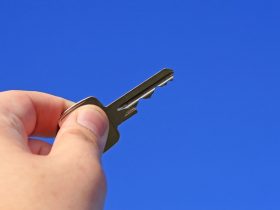Imagine you’re swamped with work, feeling overwhelmed and stressed, investigating Criss Cross by Haines. You decide to take a 10-minute walk or enjoy a cup of coffee away from your desk. Surprisingly, you return refreshed, with a new perspective or a creative spark that helps you tackle your tasks more efficiently. This scenario isn’t as uncommon as you might think. In this blog post, we’ll explore the intriguing concept of “laziness” at work and how it can sometimes be a good thing. By the end of this article, you’ll understand how incorporating strategic breaks into your workday can enhance productivity, creativity, and overall well-being.
Defining “Lazy” at Work
The term “lazy” often carries a negative connotation, but it’s essential to distinguish between being genuinely unproductive and taking strategic breaks. Being lazy at work doesn’t mean shirking responsibilities or avoiding tasks. Instead, it involves intentionally stepping back to recharge and refocus. Strategic laziness can actually lead to increased productivity and innovation by allowing your mind the necessary time to rest and reset.
Strategic laziness includes activities like taking short walks, meditating, or even daydreaming. These activities might seem unproductive at first glance, but they can be powerful tools for enhancing focus and creativity. The key is to balance these breaks with dedicated work periods, ensuring that you’re not using laziness as an excuse for chronic procrastination.
By redefining laziness in this way, we can see it as a valuable component of a well-rounded work routine. It’s about working smarter, not harder, and recognizing that sometimes, doing less can lead to achieving more.
The Science Behind Being “Lazy”
Numerous studies support the idea that brief periods of rest and relaxation can significantly improve focus and creativity. For instance, research from the University of Illinois at Urbana-Champaign found that short breaks can prevent mental fatigue and help maintain performance over long tasks. The study demonstrated that people who took brief breaks during a 50-minute task performed better than those who worked straight through without a break.
Another study published in the journal “Nature Reviews Neuroscience” highlighted the importance of the brain’s default mode network (DMN), which becomes active during rest and daydreaming. The DMN is crucial for creative thinking and problem-solving, suggesting that moments of “laziness” can actually foster innovation.
Furthermore, a study from the University of Melbourne found that employees who took regular short breaks were more engaged and productive than those who didn’t. These findings indicate that strategic laziness isn’t just a personal preference but a scientifically-backed approach to enhancing work performance.
Real-Life Examples
Consider the case of Bill Gates, who famously took time off from work to think and reflect. Gates credited these “think weeks” with helping him generate new ideas and innovations for Microsoft. Similarly, Steve Jobs was known for his long walks, which he used as a time for contemplation and creative thinking.
Another example is Arianna Huffington, co-founder of The Huffington Post. After collapsing from exhaustion in 2007, she became an advocate for better work-life balance and the importance of taking breaks. She introduced nap rooms at The Huffington Post offices, encouraging employees to take short naps to recharge.
These examples from successful professionals demonstrate that strategic laziness can lead to significant breakthroughs and achievements. By allowing themselves time to rest and reflect, they were able to come up with innovative ideas and solutions that propelled their careers forward.
Strategies for Strategic Laziness
Incorporating strategic laziness into your daily work routine can be simple and effective. Here are some practical tips to help you get started:
- Schedule Breaks: Set a timer to remind yourself to take short breaks every hour. Use this time to stretch, take a walk, or simply relax away from your desk.
- Practice Mindfulness: Engage in mindfulness exercises, such as deep breathing or meditation, to clear your mind and reduce stress.
- Daydream: Allow yourself a few minutes each day to daydream and let your mind wander. This can stimulate creative thinking and problem-solving.
- Nap Power: If possible, take a short nap during the day. Even a 10-20 minute power nap can boost your energy and productivity.
- Change Your Environment: Sometimes, a change of scenery can provide a fresh perspective. If you’re able, work from a different location, like a park or a café, for a change.
By integrating these strategies into your routine, you can harness the power of strategic laziness to enhance your productivity and well-being.
The Balance
While strategic laziness can be beneficial, it’s crucial to find a healthy balance between productivity and relaxation. Avoid using laziness as an excuse for chronic procrastination. Instead, view it as a tool to recharge and refocus.
Set clear boundaries for your breaks and stick to them. Ensure that your work periods are equally structured and productive. By maintaining this balance, you can enjoy the benefits of strategic laziness without compromising your overall performance.
Remember, the goal is to work smarter, not harder. Strategic laziness is about finding the right equilibrium that allows you to achieve your best work while maintaining your well-being.
Conclusion
Incorporating strategic laziness into your work routine can lead to unexpected positive outcomes, such as improved focus, creativity, and overall productivity. By understanding the science behind rest and relaxation, learning from real-life examples, and implementing practical strategies, you can harness the power of strategic laziness to enhance your work life.
Don’t be afraid to take a step back and allow yourself moments of rest. Your mind and body will thank you, and you’ll likely find yourself achieving more with less effort. Consider the benefits of strategic laziness in your own work life, and remember to maintain a healthy balance between productivity and relaxation.










